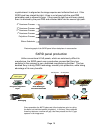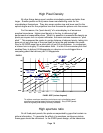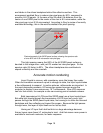
Page 16
Sony produces the SXRD panel's silicon backplane at our Kokubu
Technology Center. The backplane uses a 0.35 micron process and an
innovative drive circuit. A special planarization technique yields an extremely flat
silicon backplane—important for cell gap uniformity. The panels themselves are
assembled at Sony's Kumamoto Technology Center. There, Sony affixes the
Index Matching Indium-Tin-Oxide (IMITO) glass to the backplane before we cut
the wafer into individual panels. This process minimizes the Liquid Crystal cell
gap, minimizes dust and keeps LC gap spacers clear of the image area—all
important considerations in picture quality.
High Resolution
Sony SXRD panels have been establishing resolution benchmarks from
Day One. The very first product to incorporate SXRD technology, Sony's
Qualia™ 004 custom installation front projector, was also the world's first home
microdisplay projector to deliver full 1920 x 1080 HD resolution. Critics were
dazzled not only by the resolution but also the stable color and vivid contrast.
Sony soon incorporated the same 0.78-inch diagonal SXRD panel into the Qualia
006 home theater rear projection television.
Sony's Qualia 004 custom installation projector (left) was the first product
to incorporate SXRD technology, using the 0.78-inch 1920 x 1080 SXRD
panel. It was soon joined by the Qualia 006 (right, shown with optional
stand).
The next landmarks in SXRD resolution were the world's first commercially
available 4K projectors, the SRX-R110 and SRX-R105, which take advantage of
a substantially larger 1.55-inch microdisplay, Sony's second-generation SXRD
panel.


















